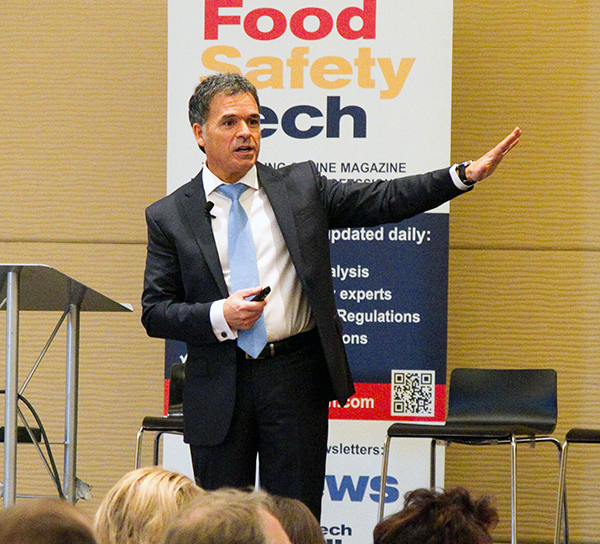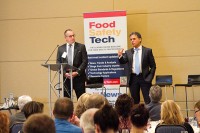Catch the Food Safety Culture Bug: How to Influence Others


Are we winning the battle against foodborne diseases? How are we going to get better at this? How do you change employee behavior within food organizations to ultimately make food safer? Frank Yiannas, vice president of food safety at Walmart, posed these questions to a captive audience last week at the Food Safety Consortium. “Human behavior can be contagious,” said Yiannas. “Food safety can be caught not only taught.”
While industry has increased its efforts in training, inspections, and microbiological testing, little progress has been made in lowering the rates of foodborne diseases over the past decade. As the global food system continues to change and grow at a rapid rate, a shift in the mindset of food safety managers—from process-focused to behavior-focused—needs to occur to facilitate a food safety culture that will in turn create a safer food supply, said Yiannas. He reviewed four tools that companies can use to implement a behavior-based food safety management system.
- Consistency and commitment. “Humans don’t want to be wishy-washy,” said Yiannas. People strive to behave in a manner that is consistent with something that they’ve either said or documented publicly. Watch the video
- Apply the tool: When conducting training, go beyond simply having employees sign an attendance roster. Instead, ask each employee to commit, in writing, that he or she will apply the principles learned in the class into daily responsibilities.
- Homophily. “Birds of a feather influence food safety for better,” said Yiannas. People with similar characteristics believe and influence each other.
- Apply the tool: When communicating an important message, use a front-line employee rather than a corporate “talking head”.
- Make food safety the social norm. “People do what other people do,” said Yiannas. In today’s society, we are flooded with information, and as a result defer to social norms as a short cut when making decisions.
- Apply the tool: When trying to enforce a behavior, show the behavior more than once and show it being done by more than one employee.
- Learning from the right way or the wrong way. Learning by being taught the wrong way can be an effective teaching tool, because it allows employees to learn from their mistakes. Learning from the “wrong way” also prevents complacency, which perhaps is one of the biggest dangers to food safety. “Complacency is driven out of overconfidence, and oftentimes poor risk assessment, and certainly poor metrics,” said Yiannas.
- Apply the tool: Create training modules that examine the missteps other food companies have made and illustrate how employees can learn from these mistakes.
Frank Yiannas also received the 2015 Industry Advocate Hero award from STOP Foodborne Illness during the consortiumThe question of metrics in food safety culture often arises, as there is no defined way to measure employee behavior. Yiannas encouraged the audience to conduct a food safety culture survey within their organizations and ask the scary questions. “You need to have the courage to hear the truth,” he said.
All images by amyBcreative photography